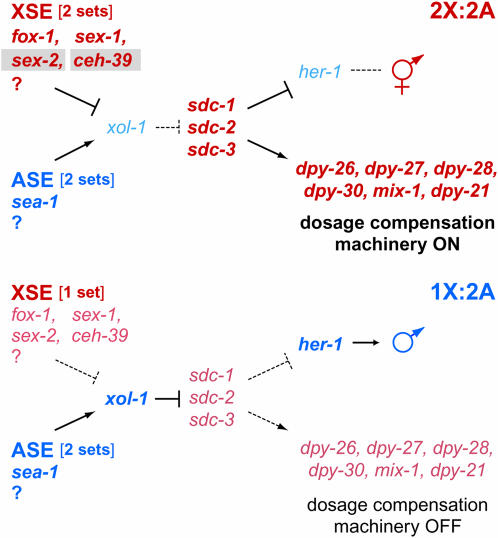Figure 1.—
The genetic pathway for sex determination and dosage compensation in C. elegans. This pathway includes our discovery of ceh-39 as an XSE and partial analysis of the XSE sex-2; both XSEs are highlighted by gray boxes. In XX animals (top), the two copies of the X-linked XSE genes repress xol-1, permitting activation of the sdc genes. The SDC proteins trigger assembly of the dosage compensation complex (SDC-1, SDC-2, SDC-3, DPY-21, DPY-26, DPY-27, DPY-28, DPY-30, MIX-1) on X, where it reduces gene expression by half. SDC proteins also promote the hermaphrodite fate by repressing her-1, a male sex determination gene. In XO animals (bottom), the single copy of XSEs allows the ASEs to activate xol-1. When xol-1 is active, the sdc genes are repressed, promoting the male fate by permitting her-1 expression and preventing assembly of the dosage compensation machinery on X. The genes in boldface type are active in a specific sex. Genes in red type are required for hermaphrodite development; genes in blue type are required for male development.

